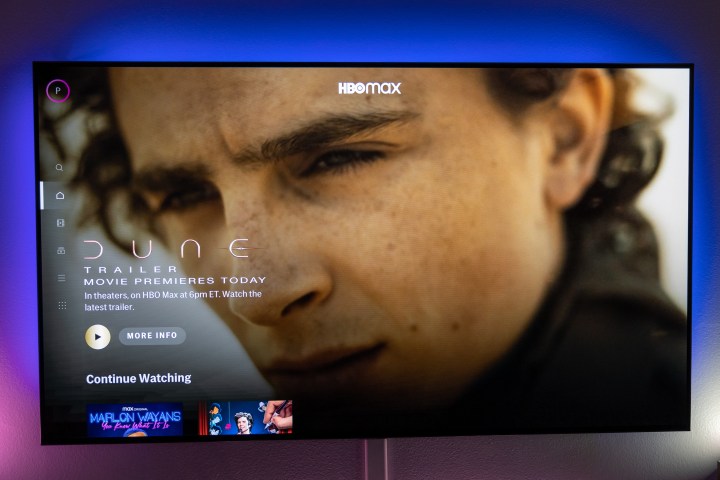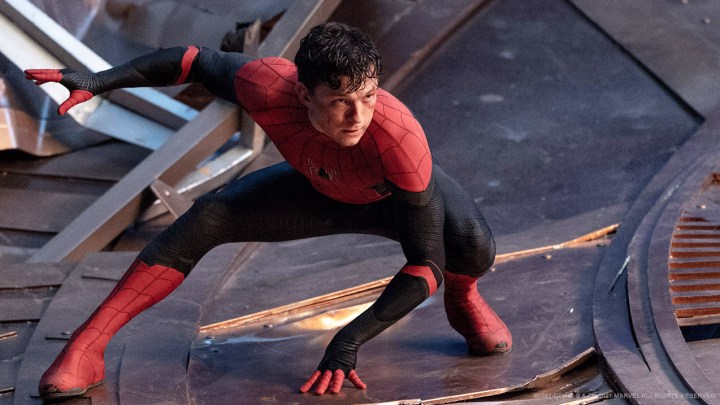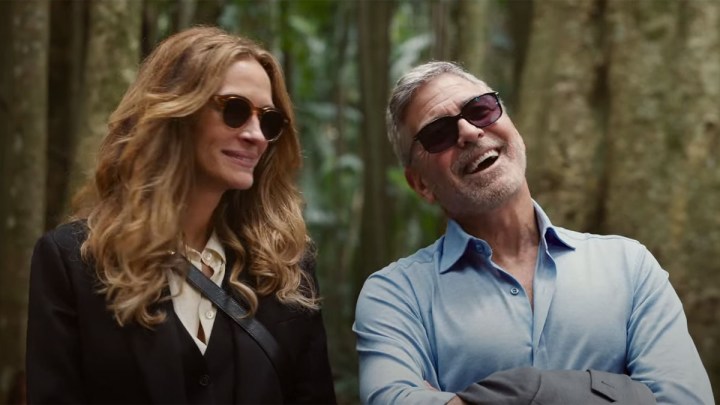After a rough two years in which the COVID pandemic and the rise of streaming services contributed to a record decline in audiences going to movie theaters, Hollywood is seemingly coming back. Franchise tentpoles like Jurassic Park Dominion and Minions: The Rise of Gru posted healthy opening weekends, while Marvel recovered from the pandemic low of Eternals and is once again posting worldwide grosses for Doctor Strange in the Multiverse of Madness and Thor: Love and Thunder that flirt with $1 billion (or soon will be). And above all else, Top Gun: Maverick continues to make money week after week, becoming Paramount’s biggest hit since Titanic.
All that progress, however, is increasingly likely to stop in August, when a dearth of product will threaten the recovery of the theatrical experience — and the sustainability of Hollywood’s traditional business model. The already dire situation got even worse, with Warner Bros. recently pushing back the Stephen King adaptation Salem’s Lot and MGM opting to release the Sylvester Stallone-led genre film Samaritan on Prime Video. While both films are not guaranteed blockbusters, their absence is all the more pronounced with what’s left on the theatrical calendar for August, September, and even October: cheap horror films, indie movies with little hope of crossover appeal, and re-releases of past hits like Avatar, Jaws, and E.T.
It didn’t have to be this way. This lull has been apparent to insiders and the entertainment press for a good while now, and the situation is made worse by streamer-owned studios opting to feed their content pipeline rather than support the exhibition business that keeps the Hollywood eco-system going. It’s still not too late for some studios to fix an easy problem, but with the last of the summer blockbusters set to debut, time is running out fast to do so.
How we got here

Like everything else, the movie industry was crippled when the COVID-19 pandemic began in the spring of 2020. Unable to release their movies, Hollywood kept delaying their big releases (Paramount with Top Gun, MGM with No Time to Die) or relegated their product to their new streaming services (virtually every major studio except Sony). To bolster their then-struggling HBO Max service, WB did the unthinkable: They released their movies in the few theaters that were open and premiered them on their service simultaneously. Disney didn’t even bother to do that with their Pixar movies, forgoing theatrical altogether (save for a dozen or so movie houses) for Soul, Luca, and Turning Red.
2021 was better if a bit scattershot. Waves of variants and lagging vaccination and booster shot rates caused most studios to be skittish, with most months having just one or two significant releases. Sometimes, this strategy worked (Free Guy and Shang-Chi were genuine hits with great word-of-mouth), and sometimes it didn’t (The Suicide Squad, Snake Eyes, and In the Heights were, at best, disappointments). The holiday season was really the first time theatrical resembled pre-pandemic times, with a multitude of hits (Ghostbusters: Afterlife, Encanto, Sing 2) and one genuine blockbuster (Spider-Man: No Way Home).

It was Spidey who brought in a wide variety of people and made a movie theater, rather than a streaming service, the place to see a movie. It helped that Sony didn’t have an in-house streaming service to send it to, which allowed the movie to play well into 2022, becoming the third highest-grossing movie of all time, and was the clarion call for audiences and the industry that movie theaters were back. With a solid spring of hits (Scream, Jackass Forever, The Batman, Uncharted, Sonic 2, The Lost City), Hollywood was on its way to pre-pandemic levels of business, and that’s thanks to movie theaters being open and having appealing pictures to satiate hungry audiences.
A summer of hope

The good times continued into the summer, which officially started with (what else?) a Marvel movie. While more divisive than the usual MCU flick, Doctor Strange in the Multiverse of Madness reaped huge grosses in its opening weekend, ultimately topping out at just over $950 million worldwide. Not bad for a film about trauma and ennui disguised as a superhero movie. Another franchise tentpole, Jurassic Park Dominion, weathered terrible reviews and nearly matched its predecessor, the equally critically reviled Fallen Kingdom. Dominion is now at $800 million, a number virtually unthinkable just a year ago.
Perhaps the most surprising hit of the summer (if not the entire year) is a sequel to a 36-year-old movie, Top Gun: Maverick. With no superheroes, dinosaurs, or minions in sight, this film, delayed two years due to star Tom Cruise’s insistence that the theatrical experience is, er, paramount, debuted above expectations and kept on drawing in audiences of all ages. It’s now 2022’s highest-grossing movie at $1.1 billion dollars, and that’s without key markets like China or Russia.

Mix in indie hits like Everything Everywhere All at Once (really a spring release, but like Maverick, it keeps going and going at the box office), animated fare like The Rise of Gru, adult dramas like Elvis, and genre films like The Black Phone and you have a healthy season of moviegoing. And the near future looks bright, with the recent launch of Thor: Love and Thunder exceeding all previous Thor movies (even Ragnarok, which benefited from pre-Infinity War buzz and had popular characters like Loki and Hulk in it) and the 1-2-3 punch of Jordan Peele’s sci-fi horror Nope, the animated DC League of Super-Pets, and the Brad Pitt action-thriller Bullet Train all due for release in rapid succession.
An empty fall

Why then does the theatrical release calendar resemble a graveyard after Bullet Train hits movie houses on August 6? From August 13 to October 14 (when Halloween Ends debuts), there’s absolutely no surefire hit slated for theatrical release. Recently, there was one: Salem’s Lot. That movie, based on one of Stephen King’s earliest and best novels, had the potential to be this year’s IT, with the same studio (WB) handling the production and marketing and the concept (vampires take over a small town) easy to digest. It was perfect for September, a month that lends itself to big-budget horror and contemplative dramas.
With that film’s mysterious removal, we’re left with a slate of movies that, while interesting, will not keep up the momentum from earlier in the year. A brief rundown is all you need to understand the problem. In August, there’s a comedy starring Diane Keaton (Mack & Rita), an Idris Elba action movie (Beast), a Dragon Ball Z anime (Super Hero), an IMAX-only re-release of E.T., a Sony horror movie (The Invitation), and a psychedelic magical fantasy starring Tilda Swinton and, returning for double duty this month, Idris Elba (Three Thousand Years of Longing). Makes you wish for Eternals, doesn’t it?
September and early October are a bit better, but not by much. Sony is re-releasing No Way Home to get it over the $2 billion gross mark while 20th Century Studios is launching a creepy and promising low-budget horror film Barbarian in the place of Salem’s Lot. Then there’s a grimly serious Viola Davis historical action epic (The Woman King), a re-release of Avatar to drum up excitement for the forthcoming sequel, a slightly surrealistic 1950s-set mystery starring Black Widow‘s Florence Pugh and pop star Harry Styles (Don’t Worry Darling), a bawdy same-sex comedy (Bros), another creepy horror film (Smile), and an animated adaptation of a near-forgotten children’s book (Lyle, Lyle Crocodile).
A question of quality

I have no doubt that most of these movies are good. And some, like Barbarian, Don’t Worry Darling, and Bros, have the potential to be breakout hits, depending on whether they can deliver on the promises their enticing trailers set forth. But even those movies, and the rest of this woeful slate, don’t command a mass audience to see them in the theatre, and that’s a problem. With streaming services flush with content, and other sources of entertainment like video games and podcasts enticing people with their own offerings, it’s vital that Hollywood has a continuous schedule of releases that demand to be seen in the movie theater.
If they don’t, an audience can get used to just waiting it out until these releases hit their respective streaming services or, worse, opt to do something else. Just look at what happened to Pixar: Disney trained audiences to expect these movies on Disney+ the day they were released. When the company finally broke that pattern with Lightyear, they were met with disappointing box office numbers, one of the few underperformers of the year for an IP that should’ve been a slam dunk.
What can be done?

For months, the entertainment industry knew this was a problem and didn’t do much to solve it. If they had acted earlier, we could’ve seen a more diverse and stronger release schedule that would give audiences of all types a reason to go back to movie theatres. Netflix could’ve finally entered the wide-release theatrical game, and earn some badly needed cash in the wake of its drop in subscriber numbers (and an even steeper drop in the stock market), by releasing their $200 million action film starring Ryan Gosling and Chris Evans in late August.
In the last decade, August has been the home to critically-spurned but commercially successful action films like the original Suicide Squad, The Meg, and The Hitman’s Bodyguard. Why not release something similar, like The Gray Man, which is directed by the Russo Brothers and also stars Ana de Armas? After six weeks, it can debut on Netflix, and the box office gross could be used to shore up any losses the company may have experienced this past spring. If Netflix is embracing an ad-supported version of their streaming service (which they once said they would never do), then is it out of the question for them to venture into movie theaters with their original movies?
Hindsight is 20/20, however, and with that film set to release on July 15, it’s not likely that this can happen. Yet Netflix has more original movies in August that would play well in theatres as summer winds down. The Jamie Foxx vampire comedy Day Shift and the Kevin Hart/Mark Wahlberg comedy Me Time are perfect end-of-summer movies that could draw older and younger audiences in alike. It doesn’t matter that these films don’t look all that great; that’s beside the point. What matters is that they will feed the beast and keep movie theaters going instead of being stranded with product that is unappealing to a mass audience.

It’s not just streamers that can help out; studios also can play a part in bolstering the schedule and keeping theatrical alive and thriving. Universal has a rom-com, Ticket to Paradise, with Julia Roberts and George Clooney set to go up against the DC film Black Adam on October 21. Why not move Paradise to September to give it room to breathe and have proper legs like last spring’s similar Sandra Bullock movie The Lost City? There’s no need to counterprogram when the calendar isn’t as packed as it used to be.
In a rare move, Searchlight Pictures moved the period murder mystery comedy See How They Run from Hulu to a limited theatrical release on September 16. Yet with no real competition, why opt for a limited run? The film’s trailer showcases an appealing quality, not unlike the 2017 version of Murder on the Orient Express, which grossed over $350 million. A wide release would allow the film to attract the older crowd, who are just now returning to see movies at the multiplex, and can possess similar (if more muted) box office endurance that Maverick is showcasing during the summer.
The importance of stability
Hollywood knows that it’s important to sustain regular patterns of behavior, especially when the audience nowadays is so fickle. With two months of warmed-over re-releases and lackluster holdovers, the industry is practically inviting its moviegoing audience to walk away for good. If they did it to Pixar, they can do it to anyone.
And with Wall Street quickly cooling on streaming services and endless content pipelines, movie theatres are more important than ever to sustain not only a studio’s finances but also the audience’s interest. It’s taken over a year of delicate planning and careful scheduling, but Hollywood now has people going back to theaters to see all types of movies: horror, dramas, comedies, animated movies, you name it. They shouldn’t blow it now just because they are still chasing a stock price that can’t be met anymore and an unwillingness to try out new release strategies.
Editors' Recommendations
- Which multiverse is better: Marvel or DC?
- 7 Marvel movies that should have ended differently
- From mighty to meh: the MCU is dying and needs to change fast
- The sorcerer and its evolution in movies
- Doctor Strange 2 writer on Sam Raimi and Marvel’s multiverse



